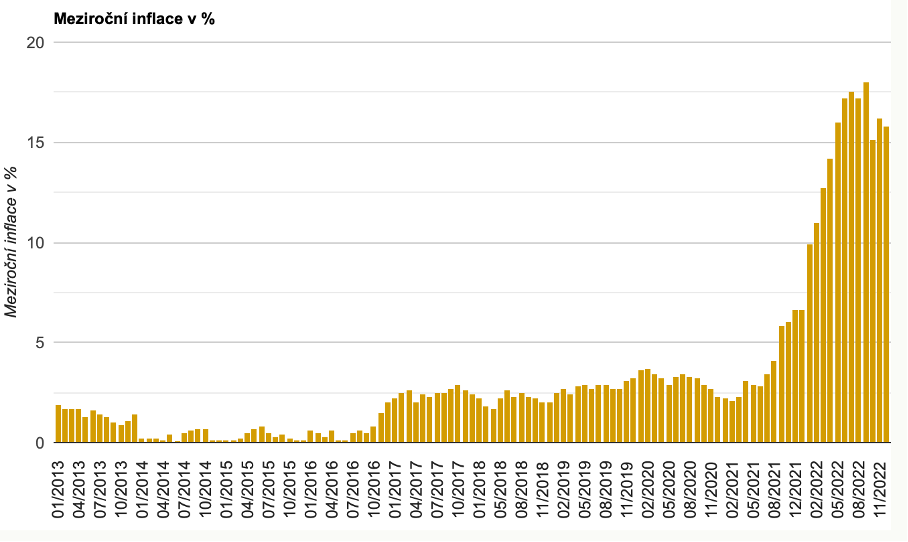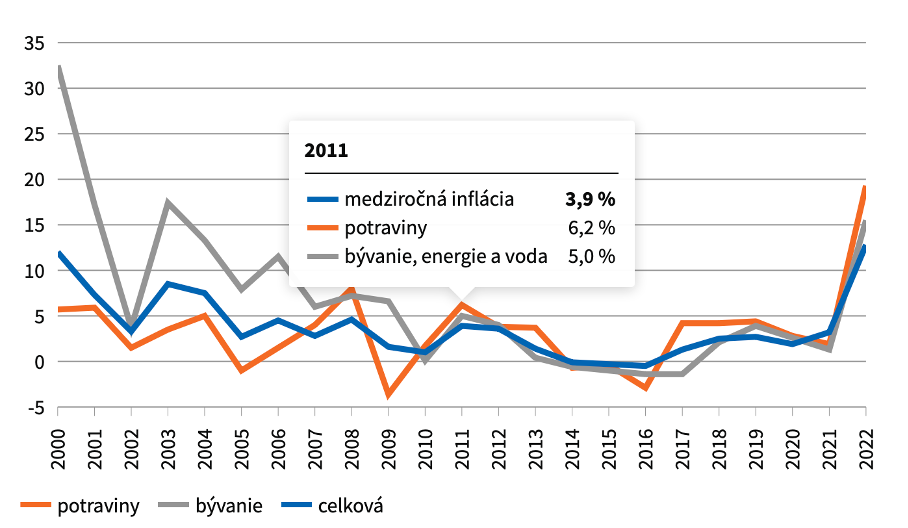Development of inflation in the Czech Republic
The average level of inflation in the Czech Republic reached 15.1 percent in 2022. According to data from the Czech Statistical Office, the inflation rate last year was the second highest since 1993, when it reached 20.8 percent. In aggregate, prices of goods rose by 17.8 percent, while prices of services recorded a slightly lower increase at 12.5 percent. The increase in prices was influenced by the end of the Household Savings Tariff, but also by the aforementioned rise in energy prices, which was reflected in food prices. In 2021, the average annual inflation there still reached the level of "only" 3.8 percent.

Graph: Average year-on-year inflation in the Czech Republic for the last 10 years (in %) (Source: Kurzy.cz)
Development of inflation in Slovakia
Slovakia, of course, has not escaped the rising prices. For the whole of 2022, price growth in the country has accelerated, with consumer prices rising by 12.8 percent year-on-year, according to data from the Slovak Statistical Office. As in the neighbouring Czech Republic, the relatively steep growth was mainly driven by the increase in energy prices, which was reflected in the rise in fuel prices and in the rise in food prices, which exceeded the 20 percent mark.* For comparison – in 2021, inflation in Slovakia reached 3.2 percent.

Graph: Average annual inflation in the Slovak Republic/development of consumer prices (in %)
(Source: Statistical Office of the Slovak Republic/DATAcube)*
Comparison of the countries
Although Slovakia's annual price growth in 2022 was 2.3 percent lower than the Czech Republic's, it should be taken into account that the average gross wage in the Czech Republic is tens of percent higher. According to data from a Wonderinterest Trading Ltd. study titled Czech Republic versus Slovakia: the economy and living standards 30 years after the division of Czechoslovakia, the difference in the countries' incomes in 2021 was as much as 26 percent.
The growth is not over yet
Data from tradingeconomics.com shows that the Czech Republic's inflation rate rose to 17.5 percent in January, putting it in the top 10 countries with the highest inflation rate in the EU, while Slovakia's rate reached 15.2 percent in the same period. So far, it seems that the peak of growth is definitely not over yet.
Olívia Lacenová, chief analyst at Wonderinterest Trading Ltd.
* Past performance is no guarantee of future results